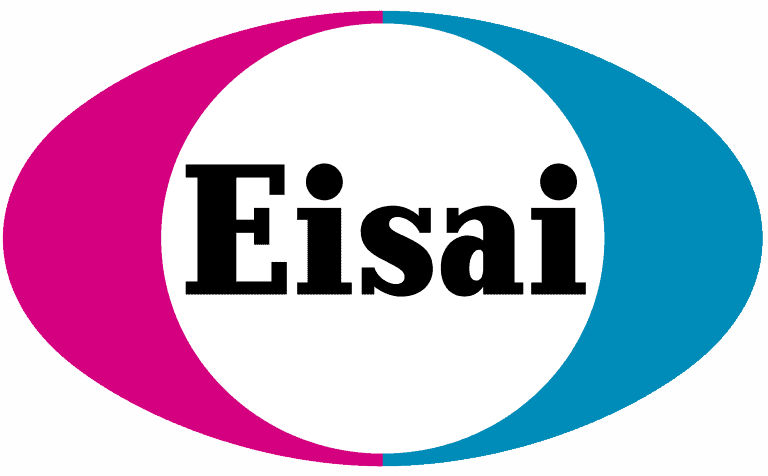There have been some exciting data releases from Stoke Therapeutics regarding their Phase 1/2a trial for the investigational therapy, STK-001, that suggest this could be the first truly disease-modifying therapy for Dravet syndrome. Results indicate significant reductions in seizure frequency and notable improvements in measures related to behavior and cognition. In addition to a recent press release, Stoke Therapeutics also held a webinar for patient advocacy group leaders to review the data and address community questions. Read on to learn more about STK-001 and the most up-to-date information regarding current and future trials.
Key Takeaways:
- Reported seizure reductions have been “substantial and sustained,” particularly in the patients receiving initial doses of 70mg.
- Improvements in measures of behavior and cognition were observed in patients who received doses of 30mg or higher in the Phase 1/2a studies and then continued treatment in the open-label extension studies receiving doses of 30 or 45mg.
- The safety profile remains consistent and STK-001 is generally well-tolerated.
- Phase 3 is in the planning process as the Stoke prepares submission packages to regulators in the US, Europe, and Japan.
- The patient community has been a vital part of this progress. Dr. Ed Kaye, a pediatric neurologist and the CEO & Director at Stoke Therapeutics, began the advocacy webinar by acknowledging the important role of the patient community in the entire process.
What is STK-001?
STK-001 is part of a class of therapeutics called antisense oligonucleotides (ASOs). ASOs are small pieces of genetic material that interact with RNA. STK-001 is part of Stoke Therapeutics’ proprietary Targeted Augmentation of Nuclear Gene Output (TANGO) platform that aims to upregulate target protein expression. Patients with Dravet syndrome have approximately 50% of the normal level of healthy Nav1.1 sodium channels due to mutations in once copy of the SCN1A gene that disrupt production of the encoded sodium channel. STK-001 is designed to upregulate expression from the healthy copy of the SCN1A gene to restore levels of the Nav1.1 sodium channel.
Which studies have evaluated STK-001?
Data has been collected from four studies in the US and UK involving 81 patients with SCN1A+ Dravet syndrome receiving at least one dose of STK-001 ranging from 10mg to 70mg.
US Studies:
- MONARCH was a Phase 1/2a study in the US involving children and adolescents ages 2 to 18 that assessed safety, tolerability, and pharmacokinetics of STK-001. The study also assessed the efficacy of STK-001 as an adjunctive antiseizure treatment.
- SWALLOWTAIL is an ongoing, open-label extension study in the US where participants that completed the MONARCH study are eligible to continue treatment with STK-001 while long-term safety and tolerability of repeated doses is evaluated, as well as impacts on seizure frequency, behavior, cognition, and quality of life.
UK Studies:
- ADMIRAL was a Phase 1/2a study in the UK involving children and adolescents ages 2 to <18 that assessed safety, tolerability, and pharmacokinetics of STK-001. The study also assessed the efficacy of STK-001 as an adjunctive antiseizure treatment, as well as overall clinical status and quality of life.
- LONGWING is an ongoing, open-label extension study in the UK where participants that completed the ADMIRAL study are eligible to continue treatment with STK-001 while long-term safety and tolerability of repeated doses is evaluated, as well as impacts on seizure frequency, behavior, cognition, and quality of life.
How has STK-001 impacted seizure frequency in the studies?
Reductions in seizure frequency have been reported throughout the length of these trials. The most recent data update demonstrated that initial doses of 70mg led to the most substantial reductions in seizure frequency that were sustained at 6 months after the last dose. While a single dose of 70mg led to significant seizure reductions (43% at 3 months and 57% at 6 months), two to three doses at 70mg resulted in an 85% reduction in seizures at 3 months and a continued 74% reduction at 6 months after the last dose. Additionally, these reductions in seizures were maintained in the open-label extension where patients continued to receive 30 to 45mg doses every 4 months. These data suggest that the ideal dosing regimen may involve 2-3 loading doses of 70mg followed by maintenance dosing at a 45mg.
What other symptoms of Dravet syndrome have been affected by STK-001?
Continued treatment with STK-001 in the open-label extension studies has led to improvements in measures of behavior and cognition such as receptive and expressive communication, personal skills, interpersonal relationships, and fine motor skills. Assessments by clinicians and caregivers additionally indicated improvements in the overall condition. These improvements suggest that STK-001 could be the first therapy to be truly disease-modifying, significantly reducing seizure frequency as well as improving other symptoms of Dravet syndrome.
What have we learned about safety of STK-001?
81 patients have received at least 1 dose of STK-001 and 10 patients have been receiving STK-001 for over 3 years (9-10 doses). 92% of patients entered the open-label extension study upon completion of the Phase1/2a study, and 84% have remained in the open-label extension. No new safety events have emerged since the last update.
30% of patients have experienced a treatment emergent adverse event (TEAE). Elevations in CSF protein levels and procedural vomiting were the most common. No clinical symptoms have emerged related to elevated CSF protein levels. One patient exited the trial due to lab reports of elevated CSF protein; at the 6-month follow-up the levels had resolved. Elevated CSF protein levels have been observed with several types of ASO therapies and it is not fully understood.
22% of patients have experienced a treatment emergent serious adverse event (TESAE). TESAEs can include hospitalizations for any reason, and are not always related to the treatment. All but 1 event in these trials has been found to be unrelated to the study drug STK-001. As previously reported by Stoke Therapeutics, there was one patient who received multiple doses of 70mg STK-001 in the ADMIRAL study and experienced Suspected Unexpected Serious Adverse Reactions (SUSARs) that the study clinician attributed to STK-001.
When will Phase 3 take place?
A global program for Phase 3 assessment of STK-001 for Dravet syndrome is in the process of development for submission to regulatory agencies in the US, Europe, and Japan. It is difficult to predict the exact timeline, as they will be working for a consistent protocol across all of the countries. As mentioned in a section above, it is anticipated that they will discuss a design involving multiple 70mg loading doses followed by maintenance dosing at 45mg. This will be a controlled study, meaning there will be a control group of patients that do not receive the therapy as a comparison group (although they would then be able to enter the open-label extension study where all participants would be dosed with STK-001). They are still discussing the details of the control group with regulators. Once there is more information, Stoke will announce more about the trial design, specific countries, and site locations.
Are there actions advocates can take to ensure this moves as quickly as possible to Phase 3 and approval?
At this time, Stoke has indicated that there are not any specific delays in the process or actions that advocates need to take. They emphasized that the efforts the community has already taken to educate regulators has been incredibly helpful, specifically referencing the Patient-Focused Drug Development Meeting that DSF hosted with the FDA and stakeholder community in February of 2022 as setting them up nicely for these conversations with regulators. We can continue to seek out educational opportunities to inform regulators, but there is not currently any delay, as Stoke is still in preparation for submission. They indicated they appreciate the willingness of the community and will be reaching out in the future if there are specific opportunities to advocate with regulators or other stakeholders in the process. They do plan to apply for Breakthrough Therapy Designation, which could help expedite meetings and increase interactions with the FDA as the trial progresses.
Are there ways to gain access to STK-001 outside of the trials?
Currently, the primary focus is on finding agreement from regulators on the global registrational study (Phase 3 study), and participation in the studies will be the only way to access STK-001. It is of higest importance that they are able to have a well-controlled confirmatory study to be sure the outcomes are accurate. If the study is successful, that is the fastest path for STK-001 to be available to the broadest population of patients with Dravet syndrome.
What about patients outside of the 2-18 years age range?
In the current studies, participants were enrolled up to the age of 18 years, meaning now several of those patients are over the age of 18 in the open-label extension and they will continue to gather data on the results from those participants. While there is not enough data in the current study to make clear comparisons between age groups, improvements in seizure frequency and measures of cognition and behavior could occur regardless of age.
For patients under the age of 2, they are discussing plans to investigate STK-001 in this younger age group, but it is unclear yet if that would be part of the Phase 3 study or a separate study.
Want to Learn More?
- Overview of gene therapy research progress for Dravet syndrome
- Slides from the most recent data update here.
- Learn about the TANGO approach from Stoke Therapeutics





